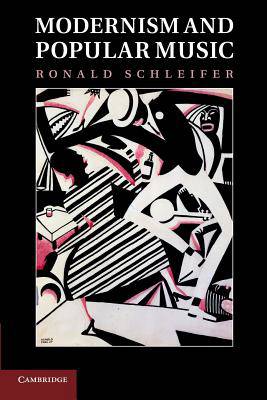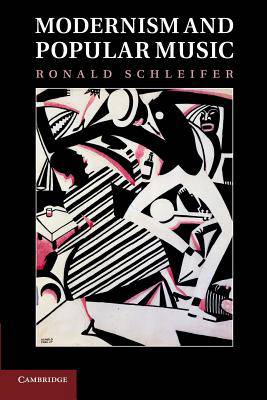
Je cadeautjes zeker op tijd in huis hebben voor de feestdagen? Kom langs in onze winkels en vind het perfecte geschenk!
- Afhalen na 1 uur in een winkel met voorraad
- Gratis thuislevering in België vanaf € 30
- Ruim aanbod met 7 miljoen producten
Je cadeautjes zeker op tijd in huis hebben voor de feestdagen? Kom langs in onze winkels en vind het perfecte geschenk!
- Afhalen na 1 uur in een winkel met voorraad
- Gratis thuislevering in België vanaf € 30
- Ruim aanbod met 7 miljoen producten
Zoeken
Omschrijving
Traditionally, ideas about twentieth-century 'modernism' - whether focused on literature, music or the visual arts - have made a distinction between 'high' art and the 'popular' arts of best-selling fiction, jazz and other forms of popular music, and commercial art of one form or another. In Modernism and Popular Music, Ronald Schleifer instead shows how the music of George and Ira Gershwin, Cole Porter, Thomas 'Fats' Waller and Billie Holiday can be considered as artistic expressions equal to those of the traditional high art practices in music and literature. Combining detailed attention to the language and aesthetics of popular music with an examination of its early twentieth-century performance and dissemination through the new technologies of the radio and phonograph, Schleifer explores the 'popularity' of popular music in order to reconsider received and seeming self-evident truths about the differences between high art and popular art and, indeed, about twentieth-century modernism altogether.
Specificaties
Betrokkenen
- Auteur(s):
- Uitgeverij:
Inhoud
- Aantal bladzijden:
- 254
- Taal:
- Engels
Eigenschappen
- Productcode (EAN):
- 9781107655300
- Verschijningsdatum:
- 2/01/2014
- Uitvoering:
- Paperback
- Formaat:
- Trade paperback (VS)
- Afmetingen:
- 152 mm x 229 mm
- Gewicht:
- 344 g

Alleen bij Standaard Boekhandel
+ 164 punten op je klantenkaart van Standaard Boekhandel
Beoordelingen
We publiceren alleen reviews die voldoen aan de voorwaarden voor reviews. Bekijk onze voorwaarden voor reviews.









